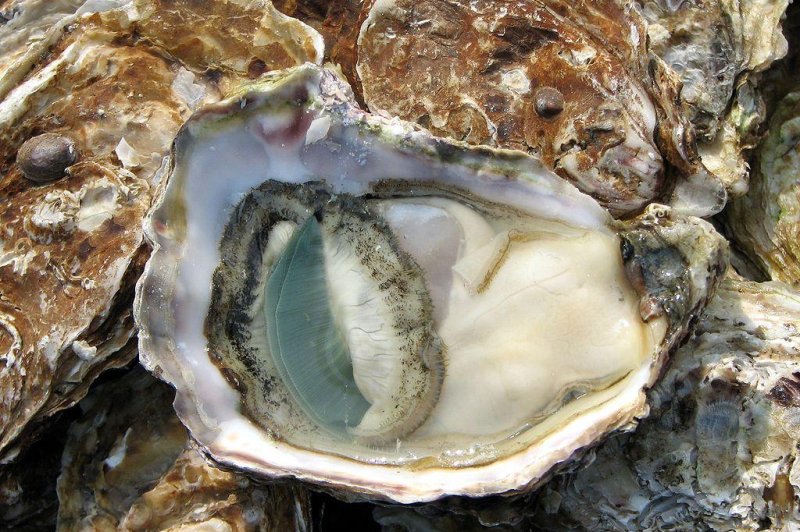Oysters and oyster farmers could be under threat from ocean acidification. Photo by Chris 73/CC
CORVALLIS, Ore., Feb. 23 (UPI) -- A new study claims that mollusk farming and fishing, a $1 billion industry, is increasingly vulnerable to ocean acidification. The study, compiled by researchers at Oregon State University, is one of most comprehensive to quantify the longterm economic risks of an overly acidic ocean.
While most reports of ocean acidification have pinpointed the Pacific Northwest as likely to see the worst effects of mollusk-killing ocean acidification, the new study contends that coastal communities on all sides of the United States will be at risk -- including the Gulf of Maine, Virginia and Maryland's Chesapeake Bay and the Louisiana bayous.
Ocean acidification is the product of growing levels of carbon dioxide in the atmosphere. More than a third of CO2 released into the air is absorbed by the oceans, lakes and rivers. The rising levels of CO2 in the ocean are exacerbated by rising water temperatures and pollution.
The effects on marine biology are most notable among mollusk populations, especially oysters and clams being raised and harvested by fish farmers.
"Ocean acidification has already cost the oyster industry in the Pacific Northwest nearly $110 million and jeopardized about 3,200 jobs," lead study author Julie Ekstrom, now a researcher at the University of California at Davis, said in a press release.
The researchers identified the Pacific Northwest, New England, Mid-Atlantic and the Gulf of Mexico as the hotspots of ocean acidification and acid-related economic disruption.
"This clearly illustrates the vulnerability of communities dependent on shellfish to ocean acidification," said co-author George Waldbusser, a marine ecologist and biogeochemist at Oregon State. "We are still finding ways to increase the adaptive capacity of these communities and industries to cope, and refining our understanding of various species' specific responses to acidification."
Scientists at Oregon State have been researching ways to help damaged mollusk populations rebound, and have been working to bolster alternative fishing industries, so to insulate local communities from steep losses.
"Ultimately, however, without curbing carbon emissions, we will eventually run out of tools to address the short-term and we will be stuck with a much larger long-term problem," Waldbusser added.
The new study was published this week in the journal Nature Climate Change. As part of their research, the scientists plotted the risks of ocean acidification on a map shared on the website of the National Resources Defense Council.















